Virtual Conference: Path of the Teabowl
Friday and Saturday
October 22 - October 23, 2021
A teabowl is essential for the preparation and consumption of the finely powdered, whipped green tea known around the world today as matcha. Originating in China and developed in Korea and Japan, teabowls have been a special category of ceramic vessel for more than a thousand years. Today they capture the imagination of potters around the world, both as utensil and as sculpture.
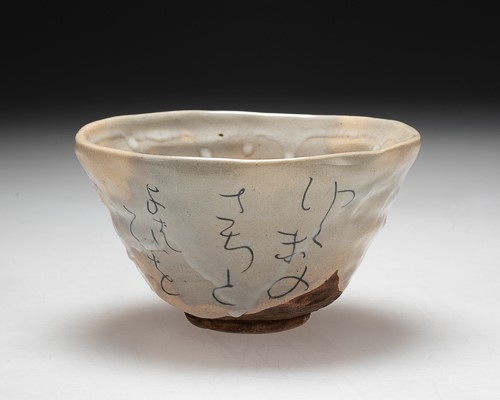
On the occasion of the Alfred Ceramic Art Museum exhibition Path of the Teabowl, this conference explores the definitions, histories, and contexts of teabowls. For more information about the exhibition.
Schedule
All times listed in Eastern Standard Time (New York)
Friday, October 22, 2021
Session 1: 1:00 p.m. –3:30 p.m.
Welcome remarks, Meghen Jones (Guest Curator, Path of the Teabowl and Associate Professor of Art History, Alfred University) and Wayne Higby (Director and Chief Curator, Alfred Ceramic Art Museum)
Robert D. Mowry (Alan J. Dworsky Curator of Chinese Art Emeritus, Harvard Art Museums, and Senior Consultant in Chinese and Korean Art, Christie's): "Tea Drinking in China and Song-Dynasty Black-Glazed Wares"
The Chinese began to drink tea around the first century AD, more as a medicine than as a beverage, and by the Tang dynasty (618–907) tea was gaining widespread popularity, not only at the imperial court but throughout society and even among Buddhist monks who found it helped to keep them awake during meditation. In the Song dynasty (960–1279), Chinese connoisseurs preferred to drink tea from dark-glazed bowls, particularly from bowls made at kilns in Fujian province. This illustrated talk will briefly discuss the origin and evolution of black-glazed wares in China from c. AD 100 until 1200, identify different types of dark-glazed wares, and examine why Chinese connoisseurs preferred those wares. The talk will conclude with an explanation of changes in aesthetic preferences and tea-drinking customs that led to the disappearance of dark-glazed wares by the Ming dynasty (1368–1644).
Philip Hu (Curator of Asian Art, Saint Louis Art Museum): "Color, Form, and Silhouette: Northern and Southern Song Tea Bowls and Related Bowl Stands from the Saint Louis Art Museum"
This talk will feature several tea bowls and related bowl stands from the collection of the Saint Louis Art Museum. These objects, from the Northern Song (960–1127) and the Southern Song (1127–1279) dynasties, represent various ware types from distinct regional kilns with white, brown, green, celadon, or bluish–white glazes, including Ding, Yaozhou, Longquan, and qingbai porcelains from Jingdezhen. The similarities and differences in the formal aspects of these tea bowls, as well as the presence or absence of decoration, reflect regional tastes across space and time.
Ellen Avril (Chief Curator and the Judith H. Stoikov Curator of Asian Art, Herbert F. Johnson Museum of Art, Cornell University): "Poetry, Painting and Informal Tea: Two Collaborative Tea Bowls in the Modern Period"
Two tea bowls lent by the Herbert F Johnson Museum of Art to the exhibition Path of the Teabowl are gassaku, collaborative creations. On a teabowl made by the Kyoto potter Isso, the nun, poet, painter and potter Otagaki Rengetsu (1791–1875) elegantly calligraphed one of her own poems. Another teabowl, made by Kyoto potter Tomioka Haruko (1847–1940), was boldly painted and inscribed by her husband, Tomioka Tessai (1836–1924). Examined in the context of bunjin culture––and tracing their roots back to Korean ceramics imported for chanoyu––these two bowls reflect artistic self–expression and informal tea practices in the Meiji and Taisho periods.
Discussion
Saturday, October 23, 2021
Session 2: 8:00 a.m. – 10:15 a.m.
Seung Yeon Sang (Visiting Researcher, Autonomous University of Barcelona): "Cranes Soaring Among Clouds: The Appreciation of Koryo Celadon Teabowls"
Koryo period (918–1392) celadon teabowls demonstrate not only superb technical skill, but also a unique aesthetic sensibility discerned in glaze color and decoration. The ethereal crane, created using an inlay technique (sanggam), was one of the popular design motifs on Koryo celadon teabowls. The fact that top–grade Koryo celadon teabowls with inlaid design were excavated from the graves of the elite indicates the popularity and high status of this type of teabowl in the aristocracy's practice of tea drinking. In this paper, I will discuss contemporary perceptions and appreciation of the various aesthetic and utilitarian qualities of Koryo celadon teabowls by examining a variety of surviving tea poetry. Appreciation of Koryo celadon went beyond geographical and temporal boundaries, and the Japanese fascination with Koryo celadon, especially in the tea context, resulted in the widespread revivals of select Koryo celadon idioms such as the motif of cranes and clouds. This paper will examine ways in which pertinent Japanese examples incorporated and transformed the styles of inlaid designs of cranes and clouds on Koryo celadon and elucidate the enduring appeal of Koryo celadon teabowls.
Akiimoto Yūji (Director of the Nerima Art Museum and Professor Emeritus at Tokyo University of the Arts): "A Free Mood Bowl that Reinterprets Tradition through Subculture, Manga, and Anime Points of View"
The tea ceremony represents traditional Japanese culture, and teabowls play a central role in it. This presentation introduces artists who are reinterpreting the teabowl, bringing in the perspectives of contemporary subcultures such as manga, animation, and fashion, and turning them into works of art. The movement to modernize tradition is not limited to single bowls, but has spread to large–scale art projects such as tearooms and gardens, and examples will be introduced for reference. The teabowls of Takuro Kuwata, Yohi Muta, Kayoko Mizumoto, and Masayasu Mitsuke will be introduced as examples. Other reinterpretations of tradition include Noritaka Tatehana's heel–less shoes, Hiroshi Sugimoto's glass tea house, the Enoura Weather Station art project, and Takuro Kuwata's installation of sculptures in the precincts of shrines.
Shinya Maezaki (Professor of Art History, Kyoto Women's University): "The History of Teabowls from the Perspective of Supply and Demand"
When throwing a teabowl on the potter's wheel, the maker spends most of the time looking at the inside to create the shape. This is because the interior is most important in highlighting the deep green of the tea. The exterior is only the result of the inside having been carefully crafted. However, when talking about the teabowl as an art object, people rely on photographs of the outside of bowls, thereby focusing primarily on their exteriors. For this presentation, I would like to touch on the often overlooked history of the inside of the Japanese teabowl. Domestic production is clearly stimulated by tea utensil stylistic trends and increases in demand. Teabowls cannot exist unless there are people who want to use them to make matcha. The historical flow of teabowl supply and demand reveals the importance the inside of teabowls, a topic not widely discussed.
Discussion
~tea break~
Session 3: 10:30 a.m. – 11:45 a.m.
Andrew L. Maske (Associate Professor of Art History, University of Kentucky): Viewing the Teabowl: The Role of Keshiki in Chawan Appreciation
The exterior of a teabowl bears what is typically called its keshiki or "view." Although the keshiki may consist of a recognizable painted image, it often comprises simply a notable variation of the glaze. The keshiki is not only a notable point of aesthetic appreciation but serves practical functions as well. This presentation explores the development of keshiki approaches and analyzes how this characteristic interacts with teabowl form to create a cohesive aesthetic experience for the user.
Natsu Oyobe (Curator of Asian Art, the University of Michigan Museum of Art): "The Teabowl in Contemporary Toriawase: Activating the Vessel for A One and Only Encounter"
In chanoyu (Japanese tea ceremony), toriawase or the "selection and arrangement of objects" is a crucial element in creating a one and only encounter for the guest. The tea objects are carefully chosen according to the season, location, guest, and occasion to convey special meaning, associations, and relationships between people and across time. It was the 17th century masters of wabi tea, who established the concept of toriawase through an intense discrimination emphasizing an aesthetic based on these relationships, using objects of heterogeneous origins, from China, Korea, Japan, and elsewhere. In the contemporary age, the wabi tea toriawase continues to set the standard, and the teabowl, as the object that the guest engages with most intimately in chanoyu, came to play the central role among tea objects. How do contemporary ceramic artists intend to produce, and tea practitioners select, the teabowl, considering its central role? In what way does the teabowl contribute to create the unique occasion? Drawing from contemporary toriawase examples, this presentation examines how the teabowl activates and is activated in space and time, and considers some of the clues behind the teabowl's enduring allure for contemporary makers and users.
Discussion
~lunch break~
Session 4: 12:30 p.m. – 3:00 p.m.
Morgan Pitelka (Chair, Department of Asian and Middle Eastern Studies, and Professor, Department of History, University of North Carolina at Chapel Hill), "The Social Life of Raku Teabowls"
In this presentation, I will argue that Raku teabowls, perhaps the most important style of ceramics in the wabi (rustic) tea tradition in Japan, are best understood as profoundly social works. Potters made Raku teabowls with the sociability of the tea gathering in mind, and the distinctive characteristics of famous Raku works connect directly to the changing social contexts of tea culture over time. I will examine the origins of the Raku technique in a disorderly period of political and cultural change in the late sixteenth century. I will then illustrate the evolution of the Raku tradition with reference to the involvement of amateur potters, the patronage of Sen tea schools, competition and branding, increasing demand for tea bowls due to the popularization of tea practice, and the precarious success that Raku potters achieved by the end of the Edo period (1603–1868). I will conclude by considering how the understanding of Raku teabowls as iconic Japanese objects developed in the modern era in three distinct phases, as new social formations led to transformations in the creation, use, and discussion of the Raku style.
Meghen Jones (Guest Curator, Path of the Teabowl and Associate Professor of Art History, Alfred University) "The Teabowl at Alfred"
Over the 120–plus–year history of what is now the New York State College of Ceramics at Alfred University, a discourse of the teabowl evolved. In the 1920s, Charles Fergus Binns–– its founder and the "father" of American studio pottery––found stylistic inspiration in smooth, symmetrical brown and black–glazed teabowls of China's Song dynasty. By the late 1940s, when ceramist Robert Turner studied at Alfred, potters saw the teabowl as an exercise in ideal form. To Daniel Rhodes, who taught at Alfred from 1947 to 1973 and had conducted researched in Japan in 1962–63, the teabowl idiom possessed an "inner mystical spirit." And by 1998, when Peter Voulkos received the Charles Fergus Binns Medal for Lifetime Achievement in Ceramic Art at Alfred, an iconoclasm towards the teabowl emerged. This presentation considers the disarticulation of culturally iconic East Asian teabowls within North American contexts, taking Alfred as a case study for the teabowl idiom as symbol/index/icon.
Discussion
Alfred Ceramic Art faculty roundtable
Alfred University Ceramic Art faculty members John Gill, Wayne Higby, Matt Kelleher, Walter McConnell, Linda Sikora (moderator), and Adero Willard will discuss the teabowl idiom in light of the Path of the Teabowl exhibition and conference.
Closing remarks: Wayne Higby and Meghen Jones
Speakers
 Yūji Akimoto is Director of the Nerima Art Museum and Professor Emeritus at Tokyo University of the Arts. He specializes in contemporary art and contemporary craft. From 1991–2006 he was curator at the Benesse Art Site Naoshima. Since 2004 he has been Director of the Chichu Art Museum. In 2007–17 he was Director of the 21st Century Museum of Contemporary Art, Kanazawa, and in 2015–21 he was Director and Professor at the University Art Museum, Tokyo University of the Arts. His major exhibitions include "Standard I, II" (2001, Naoshima) and "Craft Futurism" (2012, Kanazawa), among others. His books include The Birth of Naoshima: A Complete Record of the Challenges of Contemporary Art Witnessed on a Depopulating Island (Discovery Twenty–One).
Yūji Akimoto is Director of the Nerima Art Museum and Professor Emeritus at Tokyo University of the Arts. He specializes in contemporary art and contemporary craft. From 1991–2006 he was curator at the Benesse Art Site Naoshima. Since 2004 he has been Director of the Chichu Art Museum. In 2007–17 he was Director of the 21st Century Museum of Contemporary Art, Kanazawa, and in 2015–21 he was Director and Professor at the University Art Museum, Tokyo University of the Arts. His major exhibitions include "Standard I, II" (2001, Naoshima) and "Craft Futurism" (2012, Kanazawa), among others. His books include The Birth of Naoshima: A Complete Record of the Challenges of Contemporary Art Witnessed on a Depopulating Island (Discovery Twenty–One).
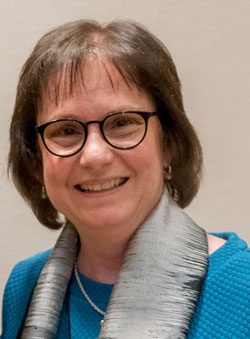 Ellen Avril is Chief Curator and the Judith H. Stoikov Curator of Asian Art at the Herbert F. Johnson Museum of Art, Cornell University, where she has curated or co–curated more than forty exhibitions on a wide range of topics in traditional and contemporary Asian art. Among the exhibition catalogues she has authored or co–authored are Traded Treasure: Indian Textiles for Global Markets (2019); Nature Observed and Imagined: Five Hundred Years of Chinese Paintings (2010); Ancient Artistry: Pre–Chinese Ceramics and Jades from the Shatzman Collection (2006); and Heavenly Earth: Early Chinese Ceramics from the Shatzman Collection (2004). She was project director for the expansion and re–installation of the Johnson Museum's Asian art galleries in 2011. Previously, she was associate curator in charge of East Asian art at the Cincinnati Art Museum. She holds an M.A. in History of Art from the University of Kansas.
Ellen Avril is Chief Curator and the Judith H. Stoikov Curator of Asian Art at the Herbert F. Johnson Museum of Art, Cornell University, where she has curated or co–curated more than forty exhibitions on a wide range of topics in traditional and contemporary Asian art. Among the exhibition catalogues she has authored or co–authored are Traded Treasure: Indian Textiles for Global Markets (2019); Nature Observed and Imagined: Five Hundred Years of Chinese Paintings (2010); Ancient Artistry: Pre–Chinese Ceramics and Jades from the Shatzman Collection (2006); and Heavenly Earth: Early Chinese Ceramics from the Shatzman Collection (2004). She was project director for the expansion and re–installation of the Johnson Museum's Asian art galleries in 2011. Previously, she was associate curator in charge of East Asian art at the Cincinnati Art Museum. She holds an M.A. in History of Art from the University of Kansas.
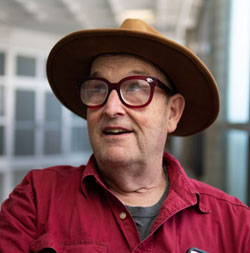 John Gill is a ceramic artist and educator. Gill is Professor of Ceramic Art at the New York State College of Ceramics at Alfred University. A member of the Council of the International Academy of Ceramics, he has traveled and lectured throughout the U.S., Canada and China. His work has been shown at the L. A. County Museum of Art; Grace Borgenicht Gallery, New York City; Harvey Meadows Gallery, Aspen; Kraushaar Gallery, New York City; Revolution Gallery, Detroit, Michigan; and Hadler Rodriquez Gallery in New York. Gill's work is held in the permanent collections of numerous art museums including the Brooklyn Museum, New York; the Victoria and Albert Museum, London; Newark Museum, New Jersey, the Los Angeles County Museum of Art, and the Metropolitan Museum of Art, New York. Gill's work was included in the recent exhibition at the Metropolitan Museum of Art, NY, Shapes From Out of Nowhere, and his work featured on the cover of its catalog.
John Gill is a ceramic artist and educator. Gill is Professor of Ceramic Art at the New York State College of Ceramics at Alfred University. A member of the Council of the International Academy of Ceramics, he has traveled and lectured throughout the U.S., Canada and China. His work has been shown at the L. A. County Museum of Art; Grace Borgenicht Gallery, New York City; Harvey Meadows Gallery, Aspen; Kraushaar Gallery, New York City; Revolution Gallery, Detroit, Michigan; and Hadler Rodriquez Gallery in New York. Gill's work is held in the permanent collections of numerous art museums including the Brooklyn Museum, New York; the Victoria and Albert Museum, London; Newark Museum, New Jersey, the Los Angeles County Museum of Art, and the Metropolitan Museum of Art, New York. Gill's work was included in the recent exhibition at the Metropolitan Museum of Art, NY, Shapes From Out of Nowhere, and his work featured on the cover of its catalog.
 Wayne Higby is an internationally renowned ceramic artist whose work is held in the permanent collections of numerous art museums around the world, including the Metropolitan Museum of Art, New York, the Smithsonian American Art Museum, Washington, DC, the National Art Museum of China, Beijing, the Hermitage Art Museum, St Petersburg, Russia and the Museum of Modern Art, Tokyo. He is a Professor of Ceramic Art and the Wayne Higby Director and Chief Curator of the Alfred Ceramic Art Museum at Alfred University, Alfred, New York. Higby is the recipient of both the Master of the Media and the Distinguished Educator Awards from the James Renwick Alliance, Smithsonian Institution as well as the Museum of Arts and Design, New York, Visionary Award. Higby is a member of honor of the United States National Council on Education for the Ceramic Arts (NCECA), a Life Trustee of the Haystack Mountain School of Crafts and an honorary citizen of the "Porcelain City" of Jingdezhen, China. In 2013 the Smithsonian American Art Museum, Washington D.C. presented a retrospective of Higby's work accompanied by the book Infinite Place: The Ceramic Art of Wayne Higby.
Wayne Higby is an internationally renowned ceramic artist whose work is held in the permanent collections of numerous art museums around the world, including the Metropolitan Museum of Art, New York, the Smithsonian American Art Museum, Washington, DC, the National Art Museum of China, Beijing, the Hermitage Art Museum, St Petersburg, Russia and the Museum of Modern Art, Tokyo. He is a Professor of Ceramic Art and the Wayne Higby Director and Chief Curator of the Alfred Ceramic Art Museum at Alfred University, Alfred, New York. Higby is the recipient of both the Master of the Media and the Distinguished Educator Awards from the James Renwick Alliance, Smithsonian Institution as well as the Museum of Arts and Design, New York, Visionary Award. Higby is a member of honor of the United States National Council on Education for the Ceramic Arts (NCECA), a Life Trustee of the Haystack Mountain School of Crafts and an honorary citizen of the "Porcelain City" of Jingdezhen, China. In 2013 the Smithsonian American Art Museum, Washington D.C. presented a retrospective of Higby's work accompanied by the book Infinite Place: The Ceramic Art of Wayne Higby.
 Philip Hu is the Curator of Asian Art at the Saint Louis Art Museum, which he joined in 2006. He curated the special exhibitions Power and Glory: Court Arts of China's Ming Dynasty (February–May 2009); Five Centuries of Japanese Screens: Masterpieces from the Saint Louis Art Museum and the Art Institute of Chicago (October 2009–January 2010); and Conflicts of Interest: Art and War in Modern Japan (October 2016–January 2017). He has reinstalled the Museum's galleries for ancient Chinese jades and bronzes; Chinese ceramics; Korean art; Japanese art; Chinese and Japanese export porcelains; and South Asian and Himalayan art. Philip has a B.A. in Architecture from the University of California, Berkeley and a Master of Architecture from the University of California, Los Angeles. As a Ph.D. candidate in Chinese art history at the Institute of Fine Arts, New York University, he taught East Asian art history at the Department of Fine Arts, New York University, and at Macalester College in St. Paul, Minnesota. He has received research fellowships from Dumbarton Oaks Research Library and Collection (2000–2001); Freer Gallery of Art and Arthur M. Sackler Gallery, Smithsonian Institution (2013); and The Wolfsonian–Florida International University (2014).
Philip Hu is the Curator of Asian Art at the Saint Louis Art Museum, which he joined in 2006. He curated the special exhibitions Power and Glory: Court Arts of China's Ming Dynasty (February–May 2009); Five Centuries of Japanese Screens: Masterpieces from the Saint Louis Art Museum and the Art Institute of Chicago (October 2009–January 2010); and Conflicts of Interest: Art and War in Modern Japan (October 2016–January 2017). He has reinstalled the Museum's galleries for ancient Chinese jades and bronzes; Chinese ceramics; Korean art; Japanese art; Chinese and Japanese export porcelains; and South Asian and Himalayan art. Philip has a B.A. in Architecture from the University of California, Berkeley and a Master of Architecture from the University of California, Los Angeles. As a Ph.D. candidate in Chinese art history at the Institute of Fine Arts, New York University, he taught East Asian art history at the Department of Fine Arts, New York University, and at Macalester College in St. Paul, Minnesota. He has received research fellowships from Dumbarton Oaks Research Library and Collection (2000–2001); Freer Gallery of Art and Arthur M. Sackler Gallery, Smithsonian Institution (2013); and The Wolfsonian–Florida International University (2014).
 Meghen Jones is Associate Professor of Art History in the School of Art and Design of the New York State College of Ceramics at Alfred University. Her research centers on modern Japanese art, design, and the global flows of modern and contemporary ceramics. For the preparation of guest curating the Path of the Teabowl exhibition, she received in 2017 a seven–month research grant from the Japan Foundation, sponsored by the International Research Center for Japanese Studies in Kyoto. Her publications include "National Treasure Tea Bowls as Cultural Icons in Modern Japan," in The Construction and Dynamics of Cultural Icons, edited by Erica van Boven and Marieke Winkler (2021); Ceramics and Modernity in Japan, co-edited with Louise Allison Cort (2019); and "Hamada Shoji, Kitaoji Rosanjin and the Reception of Japanese Pottery in the Early Cold War United States," in Design and Culture (2017). Jones received her Ph.D. in the History of Art and Architecture from Boston University in 2014, after completing a master's degree in Ceramic Craft Design at Musashino Art University in Tokyo and B.A. in Japanese Studies and Fine Art at Earlham College.
Meghen Jones is Associate Professor of Art History in the School of Art and Design of the New York State College of Ceramics at Alfred University. Her research centers on modern Japanese art, design, and the global flows of modern and contemporary ceramics. For the preparation of guest curating the Path of the Teabowl exhibition, she received in 2017 a seven–month research grant from the Japan Foundation, sponsored by the International Research Center for Japanese Studies in Kyoto. Her publications include "National Treasure Tea Bowls as Cultural Icons in Modern Japan," in The Construction and Dynamics of Cultural Icons, edited by Erica van Boven and Marieke Winkler (2021); Ceramics and Modernity in Japan, co-edited with Louise Allison Cort (2019); and "Hamada Shoji, Kitaoji Rosanjin and the Reception of Japanese Pottery in the Early Cold War United States," in Design and Culture (2017). Jones received her Ph.D. in the History of Art and Architecture from Boston University in 2014, after completing a master's degree in Ceramic Craft Design at Musashino Art University in Tokyo and B.A. in Japanese Studies and Fine Art at Earlham College.
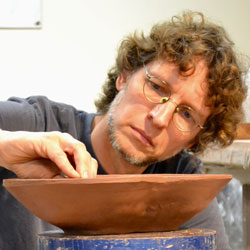 Matt Kelleher is Associate Professor of Ceramics at New York State College of Ceramics at Alfred University. He joined the faculty in 2015 after a decade of working as a studio potter in the mountains of Western North Carolina. Matt has participated in residencies at Penland School of Crafts, Archie Bray Foundation, Shigaraki Ceramic Cultural Park, and Jingdezhen Ceramic Institute. As Matt continues to investigate Cone 3 tableware, his studio practice has expanded to include larger sculptural ideas.
Matt Kelleher is Associate Professor of Ceramics at New York State College of Ceramics at Alfred University. He joined the faculty in 2015 after a decade of working as a studio potter in the mountains of Western North Carolina. Matt has participated in residencies at Penland School of Crafts, Archie Bray Foundation, Shigaraki Ceramic Cultural Park, and Jingdezhen Ceramic Institute. As Matt continues to investigate Cone 3 tableware, his studio practice has expanded to include larger sculptural ideas.
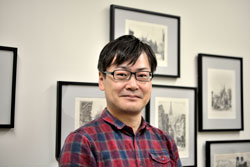 Shinya Maezaki is Associate Professor in the Department of Apparel and Space Design at Kyoto Women's University. Born in Shiga prefecture, Japan, after graduating from the Faculty of Letters, Ryukoku University, Maezaki studied in the U.K. and received his M.A. and Ph.D. in the History of Art from the School of Oriental and African Studies (SOAS), University of London. Since 2008, he has contributed to Ritsumeikan University's project to digitize Japanese craft in overseas museum collections. Maezaki has held his current position since 2015. He specializes in the history of craft culture and cultural informatics, and is engaged in a wide range of activities, including overseeing exhibitions and producing cultural content for Google Arts and Culture. He has published many books and articles.
Shinya Maezaki is Associate Professor in the Department of Apparel and Space Design at Kyoto Women's University. Born in Shiga prefecture, Japan, after graduating from the Faculty of Letters, Ryukoku University, Maezaki studied in the U.K. and received his M.A. and Ph.D. in the History of Art from the School of Oriental and African Studies (SOAS), University of London. Since 2008, he has contributed to Ritsumeikan University's project to digitize Japanese craft in overseas museum collections. Maezaki has held his current position since 2015. He specializes in the history of craft culture and cultural informatics, and is engaged in a wide range of activities, including overseeing exhibitions and producing cultural content for Google Arts and Culture. He has published many books and articles.
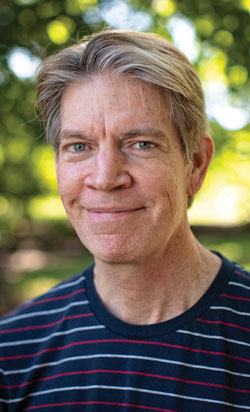 Andrew L. Maske specializes in the art and culture of Early Modern Japan, focusing particularly on topics related to Asian ceramics, woodblock prints, and women in the arts. He teaches art history of Asia at the University of Kentucky, but also lectures widely and has served as curator for a number of museum exhibitions, including "Tradition and Triumph: Japanese Women Artists from the John Fong and Colin Johnstone Collection" (Denver Art Museum, opening Oct. 2022). He was Curator of Japanese Art at the Peabody Essex Museum from 1999 to 2005. Dr. Maske received his DPhil from Oxford University in 1995.
Andrew L. Maske specializes in the art and culture of Early Modern Japan, focusing particularly on topics related to Asian ceramics, woodblock prints, and women in the arts. He teaches art history of Asia at the University of Kentucky, but also lectures widely and has served as curator for a number of museum exhibitions, including "Tradition and Triumph: Japanese Women Artists from the John Fong and Colin Johnstone Collection" (Denver Art Museum, opening Oct. 2022). He was Curator of Japanese Art at the Peabody Essex Museum from 1999 to 2005. Dr. Maske received his DPhil from Oxford University in 1995.
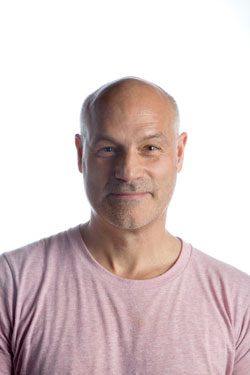 Walter McConnell, born in Philadelphia in 1956, received his B.F.A. from The University of Connecticut in 1974 and his M.F.A. in Ceramic Art from Alfred University in 1986. Well known for his installations of moist clay and towering assemblages of cast porcelain, he is the recipient of grants from, The Joan Mitchell Foundation, The Louis Comfort Tiffany Foundation, The New York Foundation for the Arts and The Constance Saltonstall Foundation. Exhibitions include: The Freer–Sackler Galleries of the Smithsonian; Bard Graduate Center Galleries, NY; Walters Art Museum, Baltimore MD; American University Museum, Washington DC; The Denver Art Museum, The Philadelphia Museum of Art, MASS MoCA, The Daum Museum and The CU Art Museum, Boulder CO. Essays and reviews on McConnell's work have appeared in Sculpture Magazine, World Sculpture News, The New Art Examiner, Ceramics: Art and Perception, The New York Times and Ceramics Monthly. Walter McConnell is currently Professor and Division Chair, Division of Ceramic Art at Alfred University.
Walter McConnell, born in Philadelphia in 1956, received his B.F.A. from The University of Connecticut in 1974 and his M.F.A. in Ceramic Art from Alfred University in 1986. Well known for his installations of moist clay and towering assemblages of cast porcelain, he is the recipient of grants from, The Joan Mitchell Foundation, The Louis Comfort Tiffany Foundation, The New York Foundation for the Arts and The Constance Saltonstall Foundation. Exhibitions include: The Freer–Sackler Galleries of the Smithsonian; Bard Graduate Center Galleries, NY; Walters Art Museum, Baltimore MD; American University Museum, Washington DC; The Denver Art Museum, The Philadelphia Museum of Art, MASS MoCA, The Daum Museum and The CU Art Museum, Boulder CO. Essays and reviews on McConnell's work have appeared in Sculpture Magazine, World Sculpture News, The New Art Examiner, Ceramics: Art and Perception, The New York Times and Ceramics Monthly. Walter McConnell is currently Professor and Division Chair, Division of Ceramic Art at Alfred University.
 Now retired, Robert D. Mowry was for many years the Alan J. Dworsky Curator of Chinese Art and Head of the Department of Asian Art at the Harvard Art Museums and also Senior Lecturer in Chinese and Korean Art in Harvard's Department of the History of Art and Architecture. A specialist in Chinese art, he has also done considerable work with Korean art, publishing in the field and building a collection of Korean paintings and ceramics for the Harvard Art Museums. Although he majored in European art history, French, and medieval humanities as an undergraduate at the University of Kansas (BA, 1967), with plans to study late medieval architecture and manuscript painting in graduate school, his two years in Korea in the Peace Corps in the late 1960s (1967–1969) sparked an abiding interest in Asian art and culture. He did his graduate work at the University of Kansas, studying with Chu–tsing Li and Laurence Sickman and specializing in Chinese art. As part of his graduate work he spent two years as a curatorial assistant and translator at the National Palace Museum, Taipei, from 1975 until 1977. He spent most of his career at the Harvard Art Museums (formerly known as the Fogg Art Museum), beginning there as an assistant curator in 1977, promoted to associate curator in 1986, and named the first Alan J. Dworsky Curator of Chinese Art in 2000. Taking a break from Harvard, he served as the founding Curator of the Mr. and Mrs. John D. Rockefeller 3rd Collection at The Asia Society in New York from 1980 until 1986. His best–known publication, Hare's Fur, Tortoiseshell, and Partridge Feathers: Chinese Brown– and Black–Glazed Ceramics, 400–1400, is the catalogue of a 1995 exhibition that pioneered the scholarly study of Chinese brown– and black–glazed ceramics. His 1993 The Chinese Renaissance in Bronze: The Robert H. Clague Collection of Later Chinese Bronzes, 1100–1900 remains the primary introductory text on later bronzes, just as his 1997 Worlds Within Worlds: The Richard Rosenblum Collection of Chinese Scholars' Rocks remains the standard reference on scholars' rocks. His 2007 A Tradition Redefined: Modern and Contemporary Chinese Ink Paintings from the Chu–tsing Li Collection, 1950–2000 was the first comprehensive study of Chinese ink paintings from the second half of the twentieth century from all parts of the globe, from China, Taiwan, and Hong Kong in the East to the U.S. and Europe in the West. His most recent publication is Peace and Quietude: Song Ceramics from the Qingjingtang Collection, which documents a 2014 exhibition that he organized for Lisbon's Macau Scientific and Cultural Center, which essentially is Portugal's national museum of Chinese art. Since his retirement from Harvard in 2013, he has been serving as a Senior Consultant in Chinese and Korean Art at Christie's; though working primarily with Christie's New York offices, he also has responsibilities toward the London, Paris, and Hong Kong offices. He's not involved in sales in marketing; rather, he does research, publishes scholarly articles, and conducts continuing–education seminars for the Christie's professional staff. From 2013 through 2017, he served as the editor of the National Museum of Korea's scholarly journal, Korean Art and Archaeology.
Now retired, Robert D. Mowry was for many years the Alan J. Dworsky Curator of Chinese Art and Head of the Department of Asian Art at the Harvard Art Museums and also Senior Lecturer in Chinese and Korean Art in Harvard's Department of the History of Art and Architecture. A specialist in Chinese art, he has also done considerable work with Korean art, publishing in the field and building a collection of Korean paintings and ceramics for the Harvard Art Museums. Although he majored in European art history, French, and medieval humanities as an undergraduate at the University of Kansas (BA, 1967), with plans to study late medieval architecture and manuscript painting in graduate school, his two years in Korea in the Peace Corps in the late 1960s (1967–1969) sparked an abiding interest in Asian art and culture. He did his graduate work at the University of Kansas, studying with Chu–tsing Li and Laurence Sickman and specializing in Chinese art. As part of his graduate work he spent two years as a curatorial assistant and translator at the National Palace Museum, Taipei, from 1975 until 1977. He spent most of his career at the Harvard Art Museums (formerly known as the Fogg Art Museum), beginning there as an assistant curator in 1977, promoted to associate curator in 1986, and named the first Alan J. Dworsky Curator of Chinese Art in 2000. Taking a break from Harvard, he served as the founding Curator of the Mr. and Mrs. John D. Rockefeller 3rd Collection at The Asia Society in New York from 1980 until 1986. His best–known publication, Hare's Fur, Tortoiseshell, and Partridge Feathers: Chinese Brown– and Black–Glazed Ceramics, 400–1400, is the catalogue of a 1995 exhibition that pioneered the scholarly study of Chinese brown– and black–glazed ceramics. His 1993 The Chinese Renaissance in Bronze: The Robert H. Clague Collection of Later Chinese Bronzes, 1100–1900 remains the primary introductory text on later bronzes, just as his 1997 Worlds Within Worlds: The Richard Rosenblum Collection of Chinese Scholars' Rocks remains the standard reference on scholars' rocks. His 2007 A Tradition Redefined: Modern and Contemporary Chinese Ink Paintings from the Chu–tsing Li Collection, 1950–2000 was the first comprehensive study of Chinese ink paintings from the second half of the twentieth century from all parts of the globe, from China, Taiwan, and Hong Kong in the East to the U.S. and Europe in the West. His most recent publication is Peace and Quietude: Song Ceramics from the Qingjingtang Collection, which documents a 2014 exhibition that he organized for Lisbon's Macau Scientific and Cultural Center, which essentially is Portugal's national museum of Chinese art. Since his retirement from Harvard in 2013, he has been serving as a Senior Consultant in Chinese and Korean Art at Christie's; though working primarily with Christie's New York offices, he also has responsibilities toward the London, Paris, and Hong Kong offices. He's not involved in sales in marketing; rather, he does research, publishes scholarly articles, and conducts continuing–education seminars for the Christie's professional staff. From 2013 through 2017, he served as the editor of the National Museum of Korea's scholarly journal, Korean Art and Archaeology.
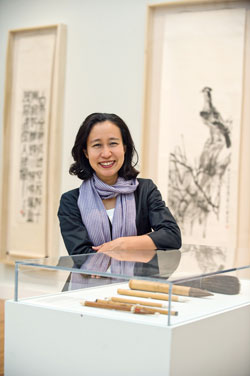 Natsu Oyobe is the Curator of Asian Art at the University of Michigan Museum of Art. Specializing in modern and contemporary Japanese art, she has curated numerous Japanese art exhibitions, including Wrapped in Silk and Gold: A Family Legacy of 20th–Century Japanese Kimono (2010), Mari Katayama (2019), and Clay as Soft Power: Shigaraki Ware in Postwar America and Japan (2022). She is also involved in cross–cultural projects from a variety of historical periods, including Isamu Noguchi and Qi Baishi: Beijing 1930 (2013). Oyobe has contributed essays to exhibition catalogues including Isamu Noguchi and Qi Baishi, and has written a chapter and is co–editing Great Waves and Mountains: Collecting the Arts of Japan (University of Florida Press, forthcoming in 2022). She served as a consulting curator for the Detroit Institute of Arts' new Japan Gallery (2016 – 2017) and the Denver Art Museum (2020). Oyobe earned a Ph.D. in art history from the University of Michigan in 2005.
Natsu Oyobe is the Curator of Asian Art at the University of Michigan Museum of Art. Specializing in modern and contemporary Japanese art, she has curated numerous Japanese art exhibitions, including Wrapped in Silk and Gold: A Family Legacy of 20th–Century Japanese Kimono (2010), Mari Katayama (2019), and Clay as Soft Power: Shigaraki Ware in Postwar America and Japan (2022). She is also involved in cross–cultural projects from a variety of historical periods, including Isamu Noguchi and Qi Baishi: Beijing 1930 (2013). Oyobe has contributed essays to exhibition catalogues including Isamu Noguchi and Qi Baishi, and has written a chapter and is co–editing Great Waves and Mountains: Collecting the Arts of Japan (University of Florida Press, forthcoming in 2022). She served as a consulting curator for the Detroit Institute of Arts' new Japan Gallery (2016 – 2017) and the Denver Art Museum (2020). Oyobe earned a Ph.D. in art history from the University of Michigan in 2005.
 Morgan Pitelka received his B.A. in East Asian Studies with honors from Oberlin College and his Ph.D. in East Asian Studies from Princeton University. Before joining the UNC faculty, he taught at Occidental College (2002–2010). His scholarship focuses on the history of late medieval and early modern Japan, with an emphasis on the samurai, tea culture, ceramics, cities, and material culture. His newest book, Reading Medieval Ruins: Urban Life and Destruction in Sixteenth–Century Japan, is forthcoming this year from Cambridge University Press. Prior to this, he has published six books: Japanese Tea Culture: Art, History, and Practice (2003), Handmade Culture: Raku Potters, Patrons, and Tea Practitioners in Japan (2005), What's the Use of Art? Asian Visual and Material Culture in Context (2007, with Jan Mrazek), Spectacular Accumulation: Material Culture, Tokugawa Ieyasu, and Samurai Sociability (2016), Kyoto Visual Culture in the Early Edo and Meiji Periods: The Arts of Reinvention (2016, with Alice Tseng), and Letters from Japan's Sixteenth and Seventeenth Centuries: The Correspondence of Warlords, Tea Masters, Zen Priests, and Aristocrats (2021, with Reiko Tanimura and Takashi Masuda). He serves as the coeditor of the Journal of Japanese Studies.
Morgan Pitelka received his B.A. in East Asian Studies with honors from Oberlin College and his Ph.D. in East Asian Studies from Princeton University. Before joining the UNC faculty, he taught at Occidental College (2002–2010). His scholarship focuses on the history of late medieval and early modern Japan, with an emphasis on the samurai, tea culture, ceramics, cities, and material culture. His newest book, Reading Medieval Ruins: Urban Life and Destruction in Sixteenth–Century Japan, is forthcoming this year from Cambridge University Press. Prior to this, he has published six books: Japanese Tea Culture: Art, History, and Practice (2003), Handmade Culture: Raku Potters, Patrons, and Tea Practitioners in Japan (2005), What's the Use of Art? Asian Visual and Material Culture in Context (2007, with Jan Mrazek), Spectacular Accumulation: Material Culture, Tokugawa Ieyasu, and Samurai Sociability (2016), Kyoto Visual Culture in the Early Edo and Meiji Periods: The Arts of Reinvention (2016, with Alice Tseng), and Letters from Japan's Sixteenth and Seventeenth Centuries: The Correspondence of Warlords, Tea Masters, Zen Priests, and Aristocrats (2021, with Reiko Tanimura and Takashi Masuda). He serves as the coeditor of the Journal of Japanese Studies.
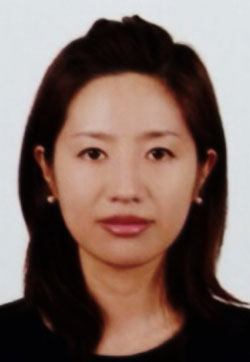 Seung Yeon Sang is currently a Visiting Researcher at the Autonomous University of Barcelona, where she is curating a virtual exhibition, Stories of Clay: The Lives of Choson Korean Potters in Tokugawa Japan, on the European Research Council Project, "Aftermath of the East Asian War of 1592–1598." She specializes in historical and contemporary ceramics in Korea and Japan, with a research focus on the history of Korea–Japan relations. After receiving her Ph.D. from Boston University, she worked at the Harvard Art Museums as the Henderson Curatorial Fellow in East Asian Art from 2016 to 2018. She has been the recipient of fellowships from the Korea Foundation, the Japan Foundation, the Metropolitan Museum of Art, the Smithsonian Institution (Freer and Sackler Galleries of Art), and the Sainsbury Institute for the Study of Japanese Arts and Cultures.
Seung Yeon Sang is currently a Visiting Researcher at the Autonomous University of Barcelona, where she is curating a virtual exhibition, Stories of Clay: The Lives of Choson Korean Potters in Tokugawa Japan, on the European Research Council Project, "Aftermath of the East Asian War of 1592–1598." She specializes in historical and contemporary ceramics in Korea and Japan, with a research focus on the history of Korea–Japan relations. After receiving her Ph.D. from Boston University, she worked at the Harvard Art Museums as the Henderson Curatorial Fellow in East Asian Art from 2016 to 2018. She has been the recipient of fellowships from the Korea Foundation, the Japan Foundation, the Metropolitan Museum of Art, the Smithsonian Institution (Freer and Sackler Galleries of Art), and the Sainsbury Institute for the Study of Japanese Arts and Cultures.
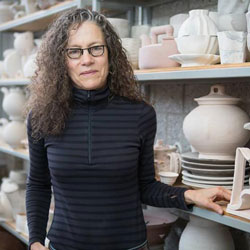
Linda Sikora resides with her family near Alfred N.Y. where she has a studio practice and is a professor of ceramic art at Alfred University. Formal study and degrees were completed at Nova Scotia College of Art and Design University (B.F.A.) and University of Minnesota–Minneapolis (M.F.A.). Professional activities are national and international. Residencies include: Archie Bray Foundation, Montana; Chunkang College of Cultural Industry, Korea; Tainan National College of The Arts, Taiwan; Clay Edge, Australia. Collections include: Art Gallery of Nova Scotia, Canada; Racine Art Museum, Wisconsin; Alfred Ceramic Art Museum, New York; Los Angeles County Museum of Art, California; Minneapolis Institute of the Arts, Minnesota; Everson Museum, New York; Huntington Museum of Art, West Virginia; Fuller Craft Museum, Massachusetts; New Orleans Museum of Art (promised), Louisiana; Louisiana State University Museum of Art, Louisiana; Smithsonian American Art Museum, Washington DC (pending), Gardiner Museum, Canada; Metropolitan Museum of Art (MET), New York; National Museum of Sweden, Stockholm (pending). Linda Sikora is a United States Artist 2020 Fellowship recipient.
 Adero Willard is currently an assistant visiting professor at New York State College of Ceramics at Alfred University. She received a B.F.A. at Alfred University in 1995 and M.F.A. at Nova Scotia College of Art and Design in 2006. She completed a one–year Salad Days residency at Watershed Center for Ceramic Arts in Maine. Adero has exhibited work nationally and internationally and has been featured in a number of publications and books on ceramics. Since 2014 she is one of the cofounders of Pots on Wheels, a nonprofit mobile clay education outreach project.
Adero Willard is currently an assistant visiting professor at New York State College of Ceramics at Alfred University. She received a B.F.A. at Alfred University in 1995 and M.F.A. at Nova Scotia College of Art and Design in 2006. She completed a one–year Salad Days residency at Watershed Center for Ceramic Arts in Maine. Adero has exhibited work nationally and internationally and has been featured in a number of publications and books on ceramics. Since 2014 she is one of the cofounders of Pots on Wheels, a nonprofit mobile clay education outreach project.
Image: Teabowl, ca. 1865–70. Waka poem and calligraphy: Otagaki Rengetsu, Japanese, 1791–1875; Bowl: Heian Isso, Japanese, active 19th century Stoneware with glaze, inscribed "In the future, happiness and long life– two sprouting leaves, to grow a thousand years." Collection of the Herbert F. Johnson Museum of Art, Cornell University, acquired through the generosity of Ellen Avril 2007.014.001
For questions about conference registration, contact ArtsEvents. For more information about the conference content, or to pose questions to speakers in advance of the event, contact Meghen Jones.
A conference recording will be available after the event on YouTube.
Financial support for this conference has been provided by a generous grant from the Japan-U.S. Friendship Commission and the Northeast Asia Council of the Association for Asian Studies.